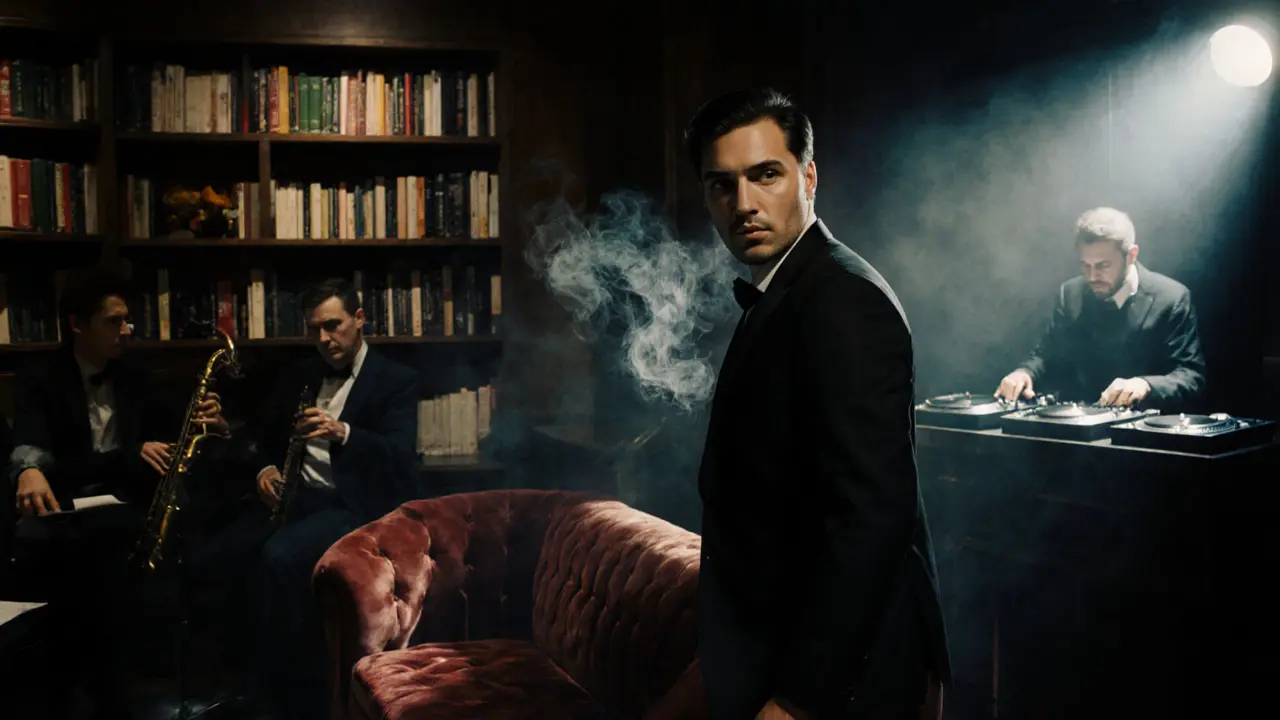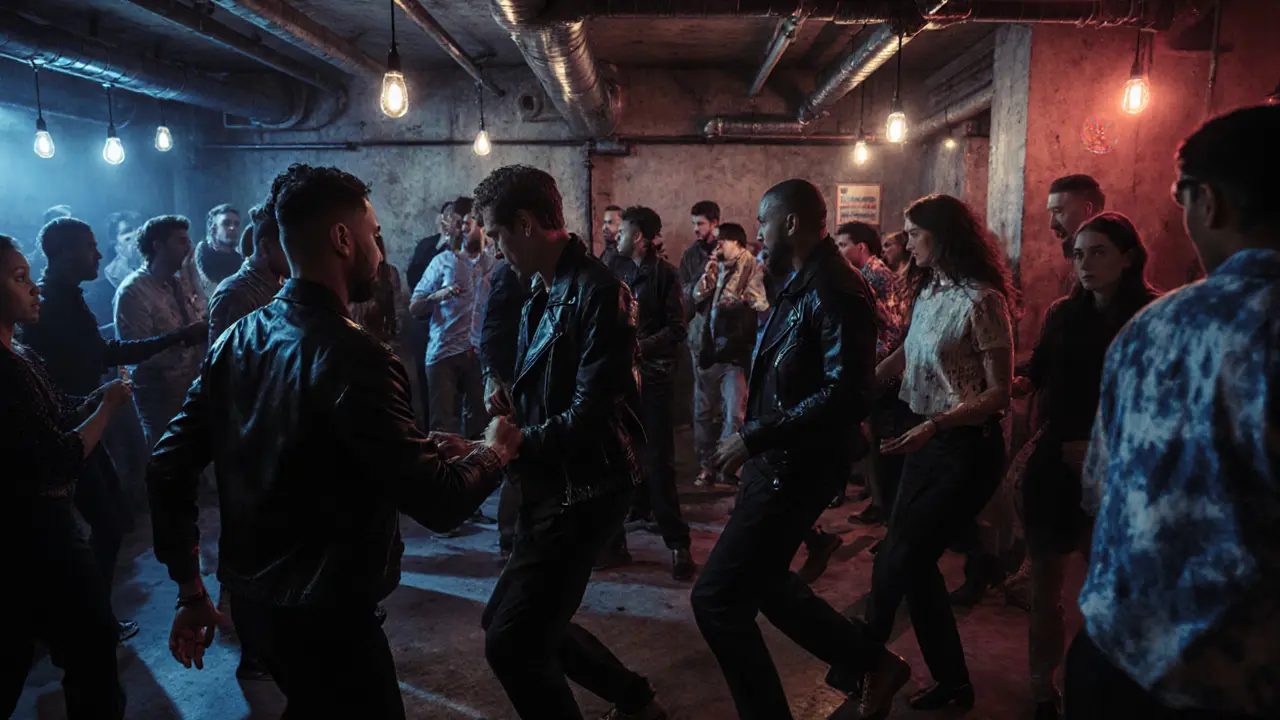When the sun goes down in Milan, the city doesn’t sleep-it switches gears. One minute you’re walking past sleek boutiques in the Quadrilatero della Moda, the next you’re dodging glittery heels and leather jackets in a basement club where the bass hits like a heartbeat. Milan’s nightlife isn’t just about partying; it’s a cultural ritual. Locals don’t show up at midnight. They show up when the real night begins-after 1 a.m.
Where the Locals Go: Navigating Milan’s Club Scene
If you want to feel like you belong, skip the tourist traps near Duomo. The real action hides in zones like Brera, Isola, and Zona Tortona. These neighborhoods don’t advertise. They whisper. You hear about them from someone who was there last weekend.
Start with La Scala Club. Not to be confused with the opera house, this is a 20-year-old institution tucked under a railway arch in Isola. It’s not fancy. No velvet ropes. No bouncers checking your designer bag. Just a raw, industrial space with a sound system that’s been tuned by DJs who’ve played alongside Carl Cox and Ricardo Villalobos. The crowd? Mix of architects, artists, and students who’ve been coming here since they were 18. Entry is €10 after midnight. Cash only.
For something more polished, head to Magazzini Generali. Once a warehouse for fabric samples, now it’s one of the most respected electronic music venues in Europe. They host live sets from Berlin and Tokyo-based producers. The lighting shifts with the music-deep blues, then red strobes, then nothing but a single spotlight on the DJ. No VIP tables. No bottle service. Just pure sound. Lines form after 1 a.m. Arrive at 12:30 if you want to get in without waiting.
Bars That Turn Into Parties: Milan’s Hidden Transition Spots
Milan doesn’t do bars that stay quiet. Even the most low-key spots have a point where the lights dim, the music kicks up, and suddenly you’re dancing on a wooden floor surrounded by people who’ve known each other for years.
Bar Basso is the original. Open since 1954, it’s where the Negroni was invented. But don’t come here for the history. Come for the 1 a.m. vibe. The bartenders still make drinks the old way-with real orange peel, not pre-sliced. At midnight, the regulars start rolling in. By 2 a.m., the bar turns into a standing-only dance floor. No music system. Just people singing along to vinyl records playing from a speaker behind the counter.
For a more modern twist, try Bar del Fico in Brera. By day, it’s a cozy wine bar with natural wines from Sicily and Piedmont. By night, it becomes a party. The owner, a former DJ, starts playing underground house at 11 p.m. No sign says “party.” You just notice the crowd has doubled. The chairs are pushed back. Someone brings a boombox. By 1 a.m., it’s a full-blown street party spilling onto the sidewalk. Locals bring snacks. You’re offered a slice of mortadella and a glass of Lambrusco. No one asks for money.
Party Spots That Only Open on Weekends
Some places in Milan don’t open every night. They wait for the right energy. For that, you need to know the right people-or at least check Instagram stories from people who do.
La Fabbrica del Vapore isn’t a club. It’s a cultural center turned warehouse party space. On Friday and Saturday nights, it hosts themed parties: synthwave, Afrobeat, experimental noise. The crowd is diverse-students, retirees, expats, designers. You’ll see someone in a tailored suit next to someone in a hoodie with a hand-painted slogan. Entry is €15. The drinks are cheap. The music is loud. The vibe? Unpredictable. That’s the point.
Then there’s Il Gatto Nero, a speakeasy-style spot behind a fake bookshelf in the Porta Venezia district. You need a password. You get it by texting “MILAN” to a number on their Instagram. The password changes weekly. Inside: dim lighting, velvet couches, a jazz trio playing live. At 1 a.m., the jazz stops. A DJ drops a techno set. No one leaves. The transition is seamless. You don’t realize you’ve moved from quiet conversation to dancing until your feet are already moving.

What to Wear: Milan’s Unwritten Dress Code
Milan doesn’t care if you’re rich. But it notices if you’re trying too hard-or not at all.
Forget jeans and sneakers unless you’re heading to a warehouse party in Isola. Most clubs expect smart casual. For men: dark trousers, a fitted shirt (no logo), leather shoes. For women: a dress that flows, or tailored pants with a silk top. No flip-flops. No baseball caps. No oversized hoodies. You don’t need Gucci. But you do need to look like you put in effort.
There’s one exception: Zona Tortona. Here, fashion is art. You’ll see people in asymmetrical coats, hand-dyed fabrics, or shoes made from recycled tires. If you’re dressed like that, you’ll fit right in. If you’re wearing a branded hoodie from a tourist shop? You’ll stand out-and not in a good way.
When to Go: Timing Is Everything
Milan’s nightlife runs on Italian time. That means:
- 11 p.m.: Bars start filling up. It’s early. You’ll get a table.
- 12:30 a.m.: Clubs open. Lines form. The real crowd arrives.
- 1:30 a.m.: The music gets heavier. The dance floor fills. This is peak time.
- 3 a.m.: The after-hours begin. Only the true believers stay. Some clubs keep playing until 6 a.m.
- 6 a.m.: Breakfast spots open. You’ll find the same people from the club now eating panettone and espresso.
Weekdays? Stick to bars. Clubs are quiet. Friday and Saturday are the only nights worth planning for. Sunday? Some spots stay open for brunch parties. You’ll find DJs spinning disco and people eating pizza while still in their club clothes.

How to Get In: No VIP Lists, No Fake Names
Milan doesn’t do fake exclusivity. You won’t find a list with names written in glitter. But you do need to know a few tricks.
- Arrive early. If you show up at 2 a.m., you’re already late.
- Dress right. As mentioned-no sportswear.
- Speak Italian, even a little. A simple “Buonasera” or “Grazie” gets you further than a bouncer’s name.
- Don’t ask for VIP. It doesn’t exist here. If someone says “I can get you in,” they’re lying.
- Use the club’s official Instagram. Most post door times and dress codes the day before.
Some clubs let you book online. La Scala Club and Magazzini Generali both have Eventbrite pages. Buy tickets in advance. You’ll skip the line. And you’ll avoid the guy at the door who says, “Full capacity.”
What to Avoid
There are places that look like clubs but aren’t. Avoid these:
- Bars near Duomo that charge €20 for a cocktail and play Top 40 hits.
- “Italian Night” themed clubs with fake opera singers and disco balls.
- Places that ask for your passport to enter. Real clubs don’t need it.
- Any venue that pushes bottle service or has a “ladies free” sign. That’s a tourist trap.
If it feels like a theme park, it is one. Milan’s nightlife is real. It’s not for sale.
After the Party: Where to Eat When You’re Done
After dancing until sunrise, you’ll be hungry. Milan’s best late-night eats aren’t in tourist zones. Head to:
- Trattoria Milanese (via San Giovanni sul Muro) - open until 4 a.m. Their risotto alla Milanese is creamy, golden, and served with a glass of red wine for €8.
- La Cucina di Nonna (in Porta Ticinese) - open 24 hours on weekends. Try the panzerotti fried with ricotta and spinach.
- Bar Pasticceria Cova - yes, the famous pastry shop. Open at 6 a.m. Get a brioche with chocolate cream and a cappuccino. You’ll thank yourself at 7 a.m.
Don’t leave without trying a panzerotto or a panettone with espresso. It’s the Milanese way to end the night.
What’s the best night to go out in Milan?
Friday and Saturday are the only nights worth planning for. Clubs are open, the crowd is full, and the energy is high. Sunday is good for brunch parties, but Monday through Thursday, most clubs are closed or quiet. Bars stay open, but don’t expect a party.
Is Milan nightlife safe for tourists?
Yes, but stay aware. Stick to well-known neighborhoods like Brera, Isola, and Porta Venezia. Avoid walking alone late at night near the train station. Most clubs have security, and locals are friendly. Don’t flash cash or expensive gear. Keep your phone and wallet secure. Pickpockets exist, but they target distracted tourists-not the local crowd.
Do I need to speak Italian to enjoy Milan’s nightlife?
No, but it helps. Most bartenders and club staff speak English, especially in popular spots. But learning a few phrases-“Un bicchiere di vino, per favore,” “Dove è il bagno?”-gets you better service and makes you look like you care. Italians appreciate the effort.
How much should I budget for a night out in Milan?
Plan for €30-€60 per person. Entry to clubs is €10-€20. Drinks cost €8-€12. Food after the party is €10-€15. If you’re buying tickets in advance for big venues, add another €10-€20. Skip bottle service-it’s overpriced and unnecessary. Cash is king at most places.
Are there any gay-friendly clubs in Milan?
Yes. Bar Piscina in Navigli is a long-standing LGBTQ+ favorite with drag shows and house music. Club 8 in Porta Venezia hosts themed nights for queer crowds. Both are welcoming, safe, and popular with locals and visitors alike. You’ll find mixed crowds-no need to be labeled to fit in.
Can I go clubbing in Milan if I’m under 18?
No. The legal age to enter clubs in Milan is 18. Some bars allow minors until midnight, but clubs strictly enforce ID checks. Even if you look older, don’t try to sneak in. Bouncers are trained to spot fake IDs. And if you get caught, you’ll be banned-not just from one club, but from the scene.

